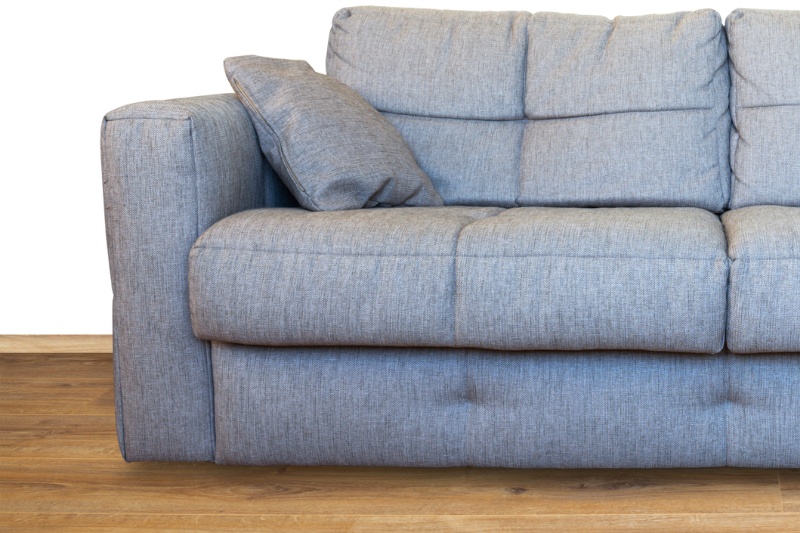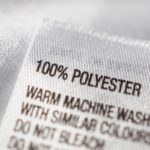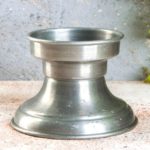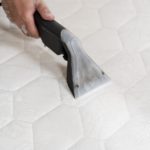Your polyester couch is the epicentre of comfort in your living space, witnessing countless family gatherings, movie nights, and lazy afternoons.
However, it’s only natural for spills, stains, and daily use to take a toll on its appearance.
Knowing how to clean a polyester couch is essential, whether dealing with an accidental spill, accumulated dust, or the lingering effects of everyday living.
In this guide, we share some practical tips, techniques, and easy-to-follow steps that will rejuvenate your beloved piece of furniture.
What’s the Best Way to Clean a Polyester Couch?
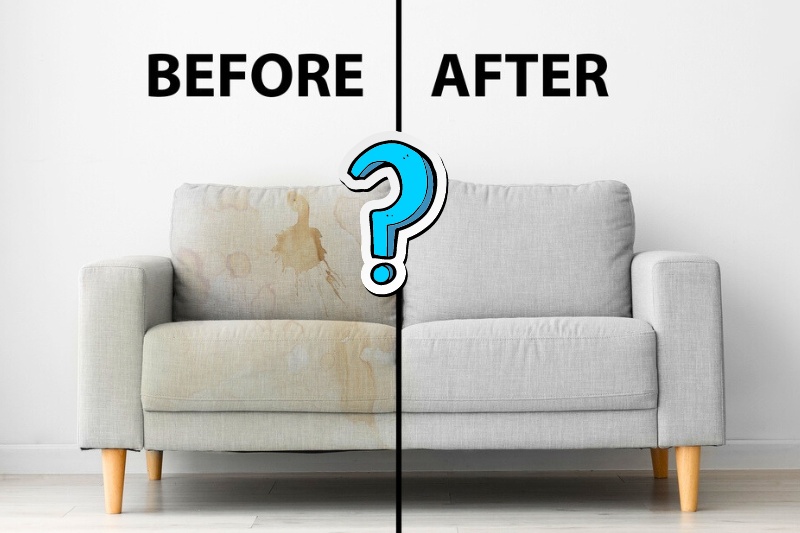
Cleaning a polyester couch requires gentle care to ensure effective cleaning without damaging the fabric.
Here’s a step-by-step guide on the best way you can clean your polyester couch today:
Step 1: Read the care instructions
The below steps are for a generic cleaning method that is safe for most polyester furniture items, including polyester couches. However, follow these steps with caution and check the upholstery care instructions for the sofa before you begin.
This helps to ensure you don’t use any cleaning methods that might harm the fabric or void the warranty.
Step 2: Vacuum your polyester couch
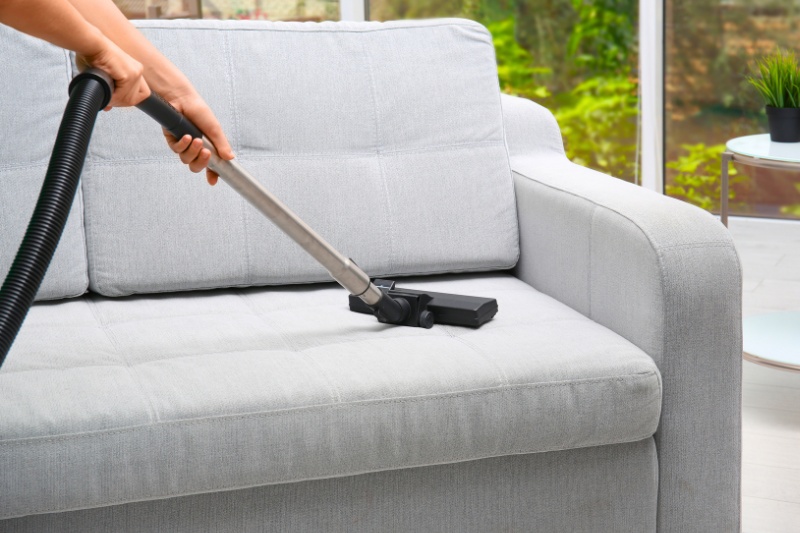
Start by vacuuming the couch thoroughly to remove any loose dirt, crumbs, or debris. Remove the main attachment from your vacuum and use the small nozzle with an upholstery attachment, which should have a soft brush head. This helps to avoid damaging or pulling the fabric.
When vacuuming, ensure you go over the entire sofa—run the vacuum over the arms, back, skirt, side, and cushions.
If the couch cushions are removable, take each one off and vacuum both the fabric underneath and each cushion individually.
For non-removable cushions, put the nozzle as far into the cracks between the cushions as possible.
Step 3: Spot-clean stains & spills
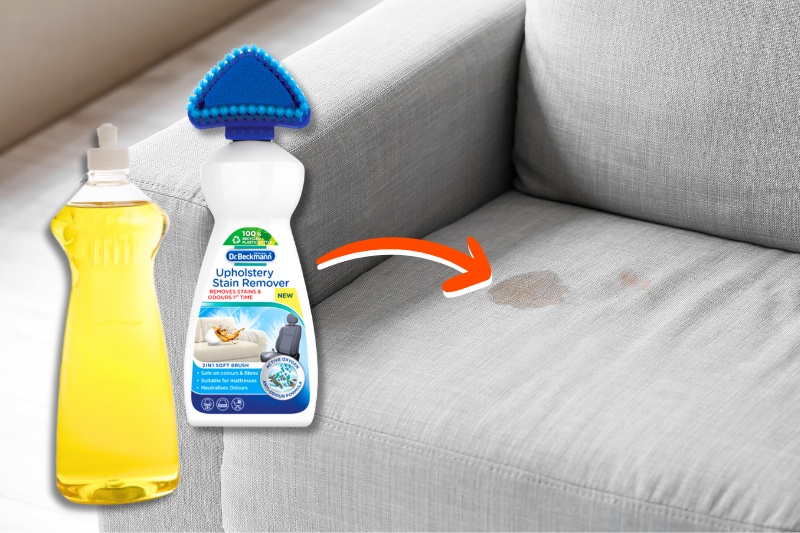
If there are specific stains or spills on your polyester sofa, spot-treat them first. For fresh spills, blot the stain gently with a clean cloth to absorb as much of the substance as possible before it seeps into the fabric.
For older stains, dampen the cloth in water and blot the polyester gently to help dissolve the stain and lift it from the material.
If you’re dealing with particularly stubborn stains, add a drop of washing-up liquid to the cloth and wipe away with clean water once the mark lifts.
Alternatively, you can purchase specific upholstery cleaners like this stain remover from Dr. Beckmann.
Step 4: Prepare a cleaning Solution
Once you’ve treated specific stains, you can prepare your general cleaning solution. To not damage the polyester material, stick with using a mild detergent (like washing-up liquid or dish soap) mixed with warm water.
Use approximately one tablespoon of detergent per litre of water and stir the solution until the detergent is dissolved.
It’s always best to test the cleaning solution on an inconspicuous area of the couch – such as the back of the sofa or underneath a seat cushion – to ensure it doesn’t cause discolouration or damage. Wait for it to dry to see if any adverse reactions occur.
Step 5: Clean the entire couch
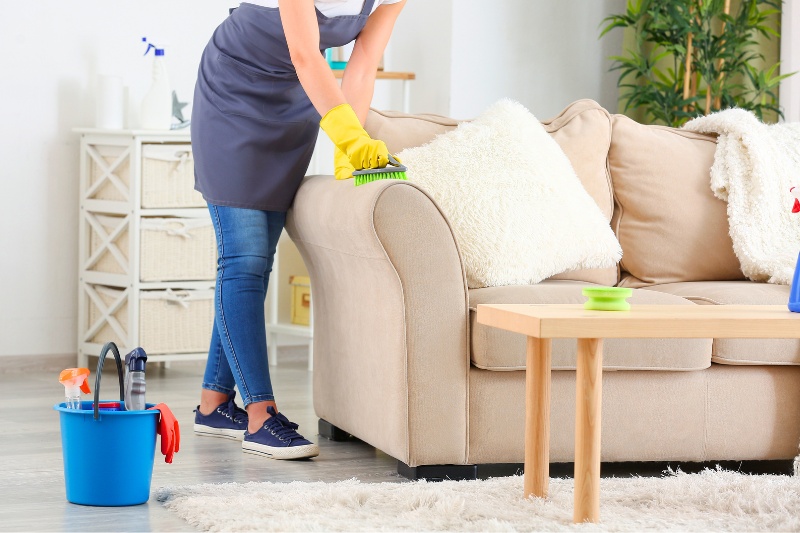
Assuming no noticeable damage to the polyester fabric, dip a clean cloth or sponge into the cleaning solution and wring out the excess water.
Gently wipe the couch in small, circular motions, starting from the top and working your way down.
It’s essential to prevent saturating the fabric—the goal is to lightly clean the surface while avoiding the deeper layers of the couch from getting wet.
Using too much water means the sofa takes too long to dry and has a risk of going mouldy or smelly.
After cleaning, dampen another cloth with plain water and gently wipe the couch to remove any remaining soap residue.
Step 6: Leave your couch to dry
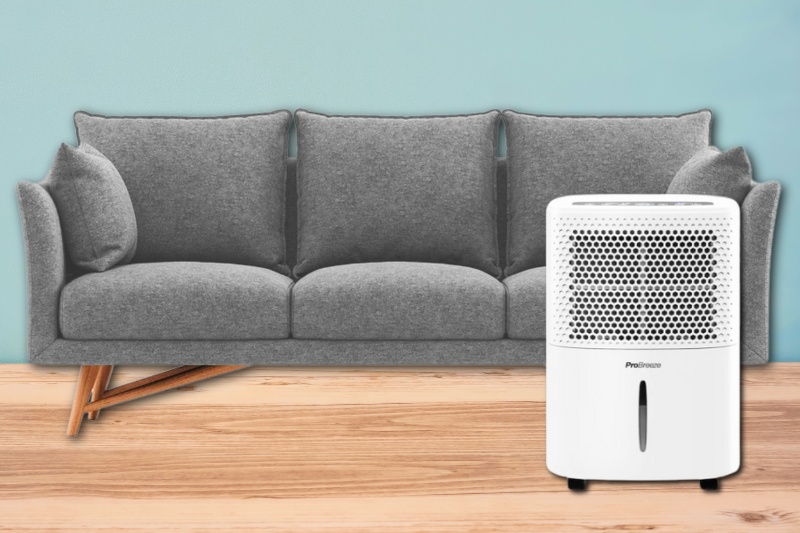
Allow the couch to air dry naturally before using it again. Your sofa will dry quicker, and you’ll have fewer damp-related problems, if left to dry in a well-ventilated area. Use fans or open windows to improve airflow and expedite the drying process.
Using a dehumidifier can also speed up the process as it absorbs excess humidity from the air, and is particularly useful if you’re in a humid environment.
The best dehumidifiers for drying clothes are equally as effective at drying polyester couches. The Pro Breeze PB-06-AE Dehumidifier is our top-rated option. It’s quiet, energy-efficient, and extracts up to 12 litres of water.
Step 7: Use a fabric freshener spray
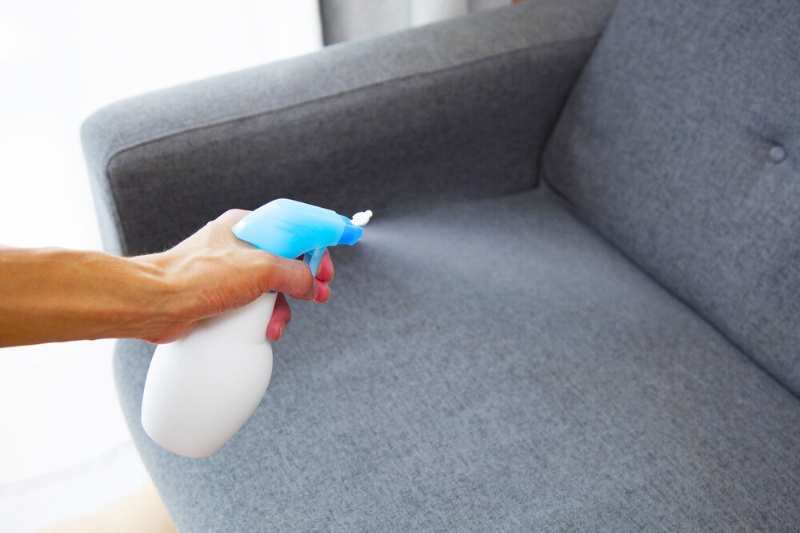
Once the couch is dry, consider using a fabric freshener or upholstery spray to leave it smelling fresh. You can purchase fabric fresheners for polyester in various fragrances, such as lavender, citrus, or fresh cotton.
Alternatively, make your own by mixing your favourite essential oils with water in a spray bottle and lightly spritz your sofa.
What’s the Best Cleaner for Polyester Fabric?

The best cleaner for polyester fabric couches is typically a gentle, pH-neutral cleaner that’s safe for cleaning upholstery.
Mild detergents like washing-up liquid are our preferred option for gentle cleaning without damage. However, there are other options you can consider:
- Commercial upholstery cleaner: Look for a commercial upholstery cleaner that is specifically designed for use on polyester fabric. Always follow the manufacturer’s instructions and conduct a patch test in an inconspicuous area.
- Bicarbonate cleaning paste: Mixing bicarbonate of soda with water to create a cleaning paste can help remove light stains and odours from polyester fabric. Apply the paste, let it sit for a while, and gently scrub the affected area with a soft brush or cloth.
- White vinegar and water solution: A mixture of white vinegar and water (in equal parts) can be used as a stain remover and deodoriser. Apply the solution to the stain, let it sit for a few minutes, and then blot it with a clean cloth.
Remember to always spot-test any cleaning solution on a hidden area of the couch to ensure it doesn’t cause discolouration or damage, even if the product is explicitly designed for polyester.
Also, avoid using abrasive brushes or rough scrubbing motions when applying the product—even if using a suitable cleaner, increased abrasion can harm the fabric.
Is a 100% Polyester Couch Easy to Clean?
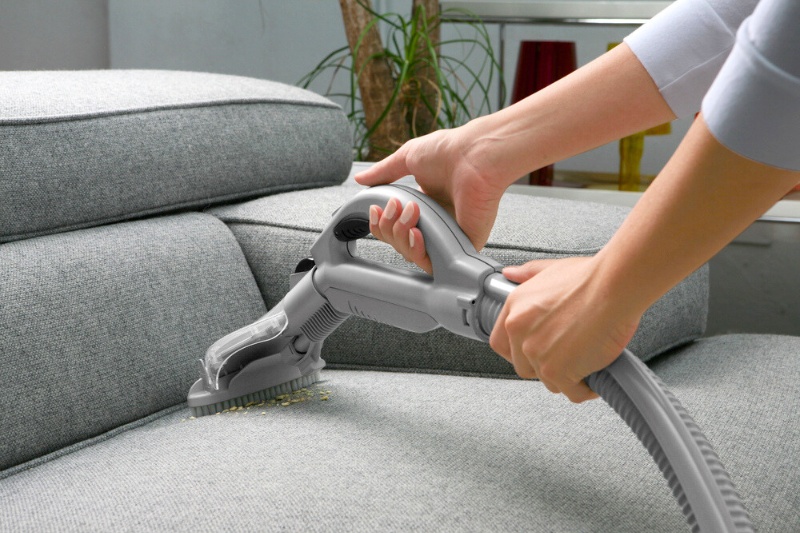
Using proper techniques, 100% polyester couches are generally considered easy to clean and maintain. Here are some reasons for this:
1. Natural resistance to stains
Polyester has several inherent stain-resistant properties, making it less likely to absorb spills and stains than other fabrics.
Firstly, polyester fibres have a smooth surface, encouraging liquid stains to slide off the material rather than adhere to the polyester.
The fibres are also tightly woven, creating a barrier that can inhibit the penetration of liquids and stains.
2. Polyester is a durable material
Polyester is a durable synthetic material that can withstand regular cleaning without easily showing wear or damage.
This durability comes from the characteristics of the fibres. They have good elasticity and resilience, allowing the fabric to resist wrinkling and creasing, even with regular use.
Polyester fabric is also resistant to abrasion, making it less likely to wear down or show signs of fraying with frequent use.
This is useful when cleaning, too—you’re less likely to damage polyester couches with too much pressure or scrubbing action than you would with sofas made from other, less durable materials.
3. It’s a quick-drying fabric
As a quick-drying material, the time you need to wait for your couch to be ready for use post-cleaning is decreased.
This makes polyester couches a convenient option, especially for busy households. Polyester typically dries quickly after cleaning for a couple of reasons:
- Hydrophobic nature: Polyester is a hydrophobic material, meaning it naturally repels water. This property ensures that excess moisture doesn’t get trapped within the fabric fibres, allowing it to evaporate quickly.
- Low absorbency: Polyester has low absorbency compared to natural fibres (cotton, wool, etc.). It doesn’t retain moisture the same way, making it quick to release any water it absorbs in the washing and cleaning process.
More Tips for Cleaning & Maintaining a Polyester Couch
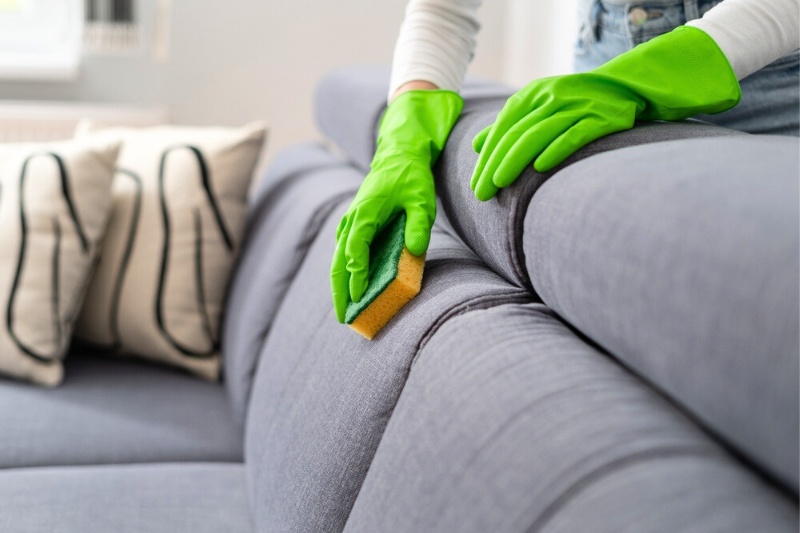
- Regularly vacuum your polyester couch using a soft brush attachment to remove dust, crumbs, and debris from the surface and crevices.
- Accidents happen! Always quickly blot any spills with a clean cloth to prevent them from seeping into the fabric and causing stains.
- Before using any cleaning solution, test it on a small, inconspicuous area of the couch to ensure it won’t cause discolouration or damage to the fabric.
- Steer clear of harsh chemicals, bleach, ammonia, or abrasive cleaners, as these can damage the polyester fabric and its colour.
- When cleaning, use a soft cloth or sponge in a gentle circular motion to clean the fabric, avoiding scrubbing that may harm the fibres.
- After cleaning, allow the couch to air dry thoroughly. Avoid using a dryer or heat source, as excessive heat can damage the polyester fabric.
- Spritz your couch with a fabric freshener or upholstery spray to keep it smelling fresh and inviting in-between cleans.
- Consider using a fabric protector or guard designed for polyester to create a barrier against future spills and stains.

Hannah has a passion for cleaning. She worked her way around Australia by cleaning hostels in exchange for free accommodation and used her cleaning skills to bag a job as a chalet host for a luxury ski company in France.
